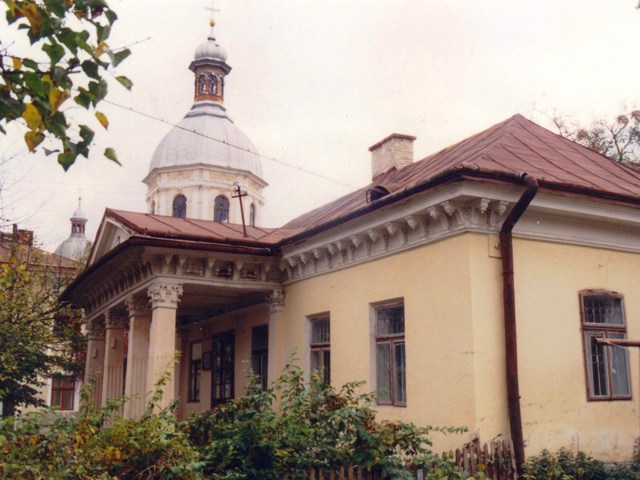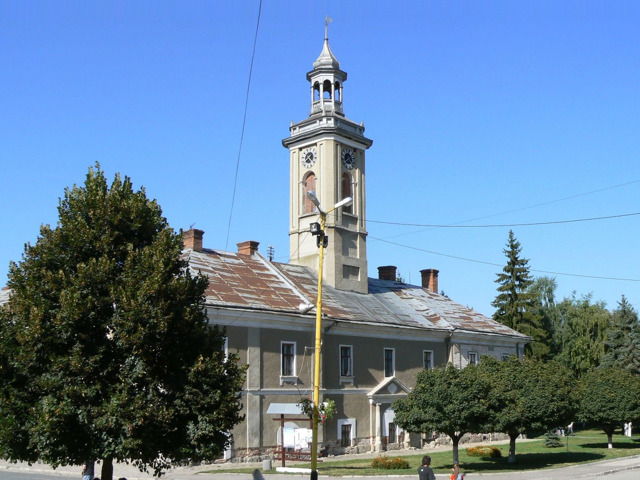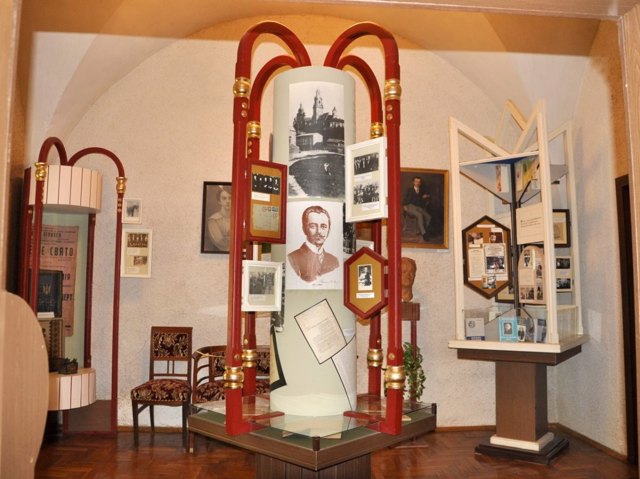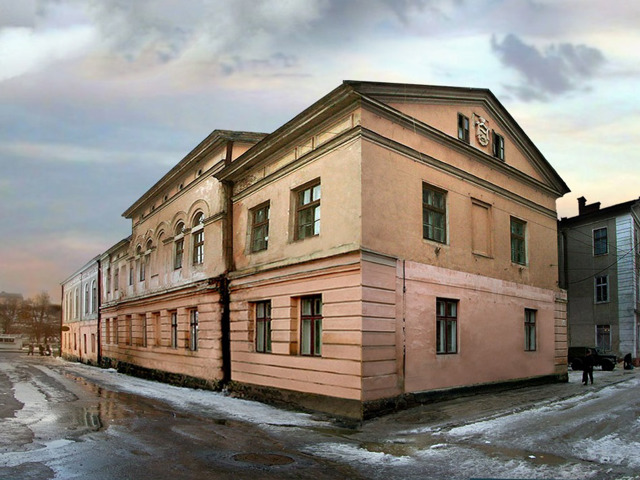Functional temporarily unavailable
General information about Berezhany
A beautiful provincial town among the hills in the valley of the river. Zolotaya Lipa, between Ternopil and Stryi. It was first mentioned in 1375, when these lands were transferred by Prince Vladislav Opolsky to the ownership of the boyar V. Teptukhovich. For a long time, the city was ruled by the Roman Catholic clergy, which is clearly expressed in architecture - Catholic churches dominate among the historical buildings. A significant contribution to the development of the city was made by the Polish magnates Sieniawski: in the 16th century. they built a defense complex with a castle, the city received the Magdeburg Law. After the death of the last of the Senyavsky family in the 18th-19th centuries. the city passed from hand to hand the Czartoryski, Lubomirski, Potocki. It owes its cul ...
A beautiful provincial town among the hills in the valley of the river. Zolotaya Lipa, between Ternopil and Stryi. It was first mentioned in 1375, when these lands were transferred by Prince Vladislav Opolsky to the ownership of the boyar V. Teptukhovich. For a long time, the city was ruled by the Roman Catholic clergy, which is clearly expressed in architecture - Catholic churches dominate among the historical buildings. A significant contribution to the development of the city was made by the Polish magnates Sieniawski: in the 16th century. they built a defense complex with a castle, the city received the Magdeburg Law. After the death of the last of the Senyavsky family in the 18th-19th centuries. the city passed from hand to hand the Czartoryski, Lubomirski, Potocki. It owes its cultural and architectural diversity to the Armenian and Jewish communities. Many temples have a pronounced defensive character.
Гарне провінційне містечко серед пагорбів в долині річки Золота Липа, між Тернополем і Стриєм. Вперше згадується в 1375 році, коли ці землі були передані князем Владиславом Опольським у власність боярину В. Тептуховичу. Тривалий час місто перебувало під владою римо-католицького духовенства, що яскраво виражено в архітектурі - серед історичної забудови домінують католицькі храми. Значний внесок у розвиток міста внесли польські магнати Сенявські: в XVI ст. ними зводиться оборонний комплекс з замком, місто отримує Магдебурзьке право. Після смерті останнього з роду Сенявських в XVIII-XIX ст. місто переходить з рук в руки Чарторийських, Любомирських, Потоцьких. Культурною та архітектурною різноманітністю він зобов'язаний вірменській та єврейській громадам. Багато храмів мають яскраво вир ...
Гарне провінційне містечко серед пагорбів в долині річки Золота Липа, між Тернополем і Стриєм. Вперше згадується в 1375 році, коли ці землі були передані князем Владиславом Опольським у власність боярину В. Тептуховичу. Тривалий час місто перебувало під владою римо-католицького духовенства, що яскраво виражено в архітектурі - серед історичної забудови домінують католицькі храми. Значний внесок у розвиток міста внесли польські магнати Сенявські: в XVI ст. ними зводиться оборонний комплекс з замком, місто отримує Магдебурзьке право. Після смерті останнього з роду Сенявських в XVIII-XIX ст. місто переходить з рук в руки Чарторийських, Любомирських, Потоцьких. Культурною та архітектурною різноманітністю він зобов'язаний вірменській та єврейській громадам. Багато храмів мають яскраво виражений оборонний характер.
Сплануй своє перебування у Berezhany
What to see and where to go in Berezhany
Tourist attractions and museums of Berezhany

Berezhany City Book Museum
Architecture , Museum / gallery
The Berezhany City Book Museum is located on the first floor of Berezhany Town Hall. Founded in 1984, since 1994 it has been a department of the Ternopil Museum of Local Lore. It tells about the history of printing in Ukraine and about outstanding writers of the region. The exhibition presents old prints of the XVII-XIX centuries, the first edition of Taras Shevchenko's "Kobzar", "Grammar of the Little Russian Language in Galicia, composed by Ivan Vahylevych" (1845), "Grammar of the Ruthenian (Ruthenian) language" by Joseph Levitsky (1834). Also on display are paintings by Lev Lepky, graphics by Olena Kulchytska and others. A separate exposition is dedicated to the public and philanthropic activities of Roman Smyk. In addition, the Berezhany City Hall houses the Berezhany Museum of Local Lore, the Museum of Sacred Art and Church History, and the Bohdan Lepky Museum.

Berezhany Historical and Architectural Reserve
Architecture , Museum / gallery
The State Historical and Architectural Reserve (DIAZ) in Berezhany was established in 2001 to protect, restore and use the city's cultural heritage sites, which preserved European planning buildings from the fourteenth and seventeenth centuries, architectural ensembles Rynok Square, Bankova and Armenian streets. In total, the reserve unites more than 30 architectural monuments, 6 of which are of national importance, including the Berezhany Castle Complex (Sieniawski Castle). The administration of the reserve is housed in a manor house in the style of late classicism (empire) of the early XIX century, which is an architectural monument of local significance. The central part of the facade is decorated with a portico with four columns of the Corinthian order and a classical pediment. In 1828-1829, while studying at the local gymnasium, the famous Ukrainian writer and educator Markiyan Shashkevych lived in this house. In the administration of the Berezhany Historical and Architectural Reserve you can book sightseeing tours of the city, thematic tours of the Sieniawski Castle and the outskirts of Berezhany.

Berezhany Museum of Local Lore (Town Hall)
Museum / gallery , Architecture
The Berezhany Museum of Local Lore is located on the second floor of the Berezhany Town Hall, which is an architectural monument of national importance. Built in 1803-1811, the two-story town hall building with a clock tower reflects the typical Galician style of provincial urban planning of the early classicism period. It is the central architectural dominant of the Market Square in Berezhany. On the ground floor there were shops, and on the second floor in 1805 the Berezhany Gymnasium was opened, where the writer and educator Markiyan Shashkevych and the writer-literary critic and public figure Bohdan Lepky studied. The Berezhany Museum of Local Lore opened here in 1980. The museum exposition is opened in 26 halls: "Natural Hall", "Archeology Hall", "Middle Ages and Cossack times in Berezhany", "Berezhany Gymnasium - center of education, science and culture", "Literary Berezhany", "Plast History and Political Repression Hall", "World War II", "Boyan Choir", "National Revival Hall", "Lemko Room", etc. The model of Berezhany Castle attracts the attention of visitors, as well as exhibits that tell about the history of the Sieniawski family and the birth of Berezhany, the coat of arms of the Potocki dynasty. Valuable artifacts are an authentic Cossack battle braid, Cossack cradles, a spearhead and a Cossack pistol. A separate exposition is devoted to the history of the USS (Ukrainian Sich Riflemen) in the Berezhany region, in particular the battle on Mount Lysonya. In addition, the Berezhany Town Hall houses the Regional Communal Museum of Bohdan Lepky, the Museum of Sacred Art and Church History, and the Berezhany Book Museum.

Bogdan Lepky Museum
Museum / gallery
The Regional Municipal Museum of Bohdan Lepky in Berezhany opened in 1995 in the Berezhany Town Hall on Rynok Square. It was here that the Berezhany Gymnasium was located from 1805, where the outstanding Ukrainian poet, writer, literary critic and public figure Bohdan Lepky studied and later taught. Here he began to write his first poems and stories. The main fund of the Bohdan Lepky Museum has about 3,500 exhibits. The exposition in six halls consists of lifetime editions of the writer's works, original photographs, various documents, textbooks, publications in German magazines and paintings. In addition, the Berezhany Town Hall houses the Berezhany Museum of Local Lore, the Museum of Sacred Art and Church History, and the Berezhany Book Museum.

Magistrate's Building (DIAZ Exhibition Hall)
Architecture , Museum / gallery
The building of the city magistrate in Berezhany was erected in the middle of the XIX century. Its purely administrative functional role as a body of city self-government explains the finishing modesty of the facades. In the 1920s and 1930s, the city museum was located on the ground floor of the building. The Magistrate's Assembly Hall was often used for various ceremonial events, in particular in 1898 the famous Ukrainian poet Bohdan Lepky delivered a speech here in honor of the 100th anniversary of the publication of "Aeneid" by Ivan Kotlyarevsky. Nowadays, the premises of the building are occupied by the research department of the State Historical and Architectural Reserve in the city of Berezhany, the DIAZ exhibition hall, art school, district archive.
Reviews Berezhany
Geographical information about Berezhany
| {{itemKey}} | {{itemValue}} |
|---|---|
| Region |
Ternopil |

